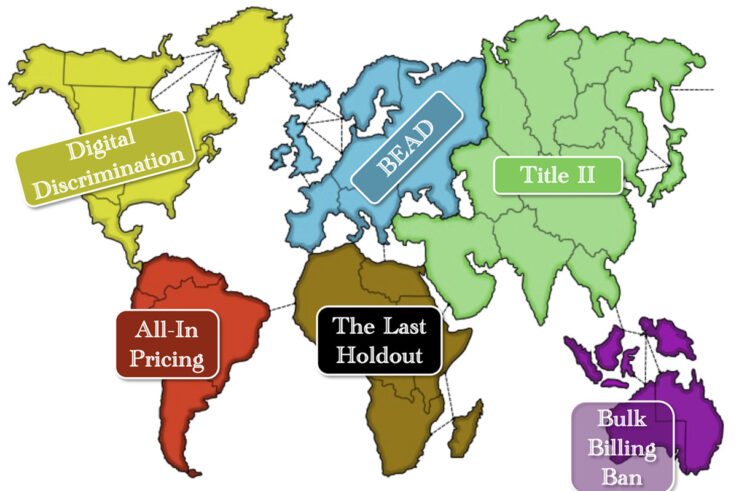This article is a part of the Unfair Methods of Competition Symposium symposium.
Deterrence ought to be an important objective of enforcement policy. Some might argue it should be THE objective. But it is difficult to know what is being deterred by a law if the agency enforcing the law cannot or will not explain its boundaries. Commissioner Wright’s call for a policy statement on the scope of Section 5 enforcement is a welcome step toward Section 5 achieving meaningful deterrence of competitively harmful conduct.
The draft policy statement has considerable breadth. I will limit myself to three concepts that I see as important to its application, the temporal dimension (applicable to both harm and efficiencies), the concept of harm to competition, and the concept of cognizable efficiencies.
Temporal Dimension
Commissioner Wright offers a compelling framework, but it is missing an important element — the temporal dimension. Over what time period must likely harm to competition be felt in order to be actionable? Similarly, over what time period must efficiencies be realized in order to be cognizable? On page 8 of the draft policy statement he notes that the Commission may challenge “practices that have not yet resulted in harm to competition but are likely to result in anticompetitive effects if allowed to continue.” When must those effects be felt? How good is the Commission’s crystal ball for predicting harm to competition when the claim is that the challenged conduct precluded some future competition from coming to market? Doesn’t that crystal ball get a bit murky when you are looking further into the future? Doesn’t it get particularly murky when the future effect depends on one more other things happening between now and the time of feared anticompetitive effects?
We often hear from the Commission that arguments about future entry are too remote in time (although the bright line test of 2 years for entry to have an effect was pulled from the Horizontal Merger Guidelines). Shouldn’t similar considerations be applied to claims of harm to competition? The Commission has engaged in considerable innovation to try to get around the potential competition doctrine developed by the courts and the Commission under Section 7 of the Clayton Act. The policy statement should consider whether there can be some temporal limit to Section 5 claims. Perhaps the concept of likely harm to competition could be interpreted in an expected value sense, considering both probability of harm and timing of harm, but it is not obvious to me how that interpretation, whatever its theoretical appeal, could be made operational. Bright line tests or presumptive time periods may be crude but may also be more easily applied.
Harm to Competition
On the “harm to competition” element, I was left unclear if this was a unified concept or whether there were two subparts to it. Commissioner Wright paraphrases Chicago Board of Trade and concludes that “Conduct challenged under Section 5 must harm competition and cause an anticompetitive effect.” (emphasis supplied). He then quotes Microsoft for the proposition that conduct “must harm the competitive process and thereby harm consumers.” (emphasis supplied). The indicators referenced at the bottom of page 18 of his speech strike me as indicators of harm to consumers rather than indicators of harm to the competitive process. Is there anything more to “harm to competition” than “harm to consumers?” If so, what is it? I think there probably should be something more than harm to consumers. If I develop a new product that drives from the market all rivals, the effect may be to increase prices and reduce output. But absent some bad act – some harm to the competitive process – my development of the new product should not expose me to a Section 5 claim or even the obligation to argue cognizable efficiencies.
On the subject of indicators, the draft policy statement notes that perhaps most relevant are price or output effects. But Commissioner Wright’s speech goes on to note that increased prices, reduced output, diminished quality, or weakened incentives to innovate are also indicators (Speech at 19). Shouldn’t this list be limited to output (or quality-adjusted output)? If price goes up but output rises, isn’t that evidence that consumers have been benefitted? Why should I have to defend myself by arguing that there are obvious efficiencies (as evidenced by the increased output)? The reference to innovation is particularly confusing. I don’t believe there is a well developed theoretical or empirical basis for assessing innovation. The structural inferences that we make about price (often dubious themselves) don’t apply to innovation. We don’t really know what leads to more or less innovation. How is it that the Commission can see this indicator? What is it that they are observing?
Cognizable Efficiencies
On cognizable efficiencies, there is a benefit in that the draft policy statement ties this element to the analogous concept used in merger enforcement. But there is a disadvantage in that the FTC staff usually finds that efficiencies advanced by the parties in mergers are not cognizable for one reason or another. Perhaps most of what the parties in mergers advance is not cognizable. But it strikes me as implausible that after so many years of applying this concept that the Commission still rarely sees an efficiencies argument that is cognizable. Are merging parties and their counsel really that dense? Or is it that the goal posts keeping moving to ensure that no one ever scores? Based on the history in mergers, I’m not sure this second element will amount to much. The respondent will assert cognizable efficiencies, the staff will reject them, and we will be back in the litigation morass that the draft policy statement was trying to avoid, limited only by the Commission’s need to show harm to competition.




